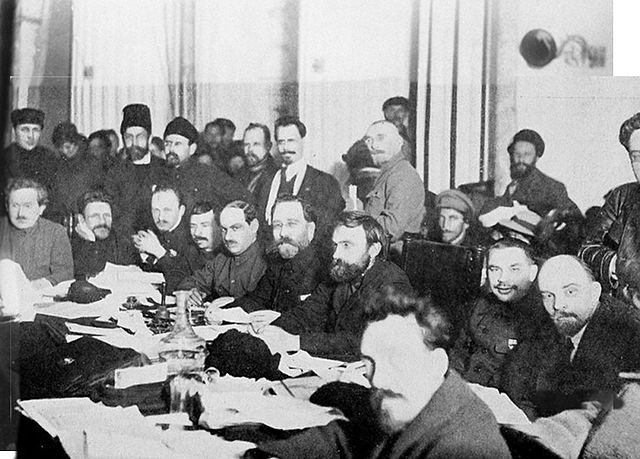Bolsheviks vs Mensheviks
Bolsheviks and Mensheviks represent two factions within the Russian political sphere, with each displaying differences in terms of their principles and constitution. The Bolsheviks were a faction of the Marxist Russian Social Democratic Labor Party (RSDLP), whereas the Mensheviks emerged as a faction of the Russian Revolutionary Movement in 1904. A key distinction between these two factions is that the Bolsheviks split from the Menshevik faction in 1903 during the Second Party Congress. The Menshevik faction originated from a dispute between Vladimir Lenin and Julius Martov during the Second Congress of the Russian Social Democratic Labor Party, which centered around minor issues of party organization.
Key Takeaways
- Bolsheviks were a faction of the Marxist Russian Social Democratic Labor Party, while Mensheviks were a faction of the Russian Revolutionary Movement.
- The Bolsheviks split from the Menshevik faction in 1903 during the Second Party Congress, due to a dispute between Vladimir Lenin and Julius Martov.
- Both factions believed in bourgeois democracy and felt that a bourgeois democratic revolution was necessary; however, the Mensheviks were generally considered more moderate than the Bolsheviks.
Who are Bolsheviks?
The Bolsheviks were a faction of the Marxist Russian Social Democratic Labor Party, with their followers or supporters being called Bolsheviks. The October Revolution phase of the Russian Revolution in 1917 brought the Bolsheviks to power, and they subsequently founded the Russian Soviet Federative Socialist Republic. By 1922, this republic became the chief constituent of the Soviet Union. The Bolsheviks, led by Lenin, primarily consisted of workers under a democratic internal hierarchy, governed by the principle of democratic centralism. They considered themselves the champions of Russia’s revolutionary working class, and their impact on Russian history was so significant that their practices were often referred to as Bolshevism. Practitioners of Bolshevism were called Bolshevists, a term first used by Leon Trotsky to describe someone who practiced and believed in Bolshevism. It is believed that Trotsky recognized the true nature of Leninism in Russia. Like the Mensheviks, the Bolsheviks also held a strong opposition.
Who are Mensheviks?
Due to the dispute between Martov and Lenin, the supporters of Martov became known as Mensheviks and were considered the minority faction. The Mensheviks were more positive in their approach to managing the mainstream liberal opposition. Neither faction could hold an absolute majority during the Congress, and the split between the two factions proved to be a long-lasting aspect of Russian history. Both factions participated in several discussions regarding the 1905 revolution, class alliances, and bourgeois democracy. A shared belief between both factions was their support of bourgeois democracy, with both feeling that a bourgeois democratic revolution was necessary. Generally, the Mensheviks were considered more moderate than the Bolsheviks, based on general observations.
What is the difference between Bolsheviks and Mensheviks?
- Bolsheviks were a faction of the Marxist Russian Social Democratic Labor Party, while Mensheviks were a faction of the Russian Revolutionary Movement that emerged in 1904.
- Bolsheviks represented the majority, while Mensheviks represented the minority.
- Bolsheviks wanted the party to be a small collection of disciplined professional revolutionaries, whereas Mensheviks wanted a mass party that was not tightly knit and was more loosely organized.
- Bolsheviks believed that by 1917, Russia was ready for a revolution that would establish communism in the country, while Mensheviks believed that the country was not yet ready and needed to first bolster capitalism before communism could be achieved.
- Bolsheviks were not hesitant to use violence to achieve their goals, while Mensheviks did not want to use violence.
- Bolsheviks believed that other organizations, such as trade unions, must be well controlled by the party, while Mensheviks believed that only the presence of the party in these organizations was enough.
These fundamental differences highlight the distinctions between the two essential Russian factions, the Bolsheviks and Mensheviks.
